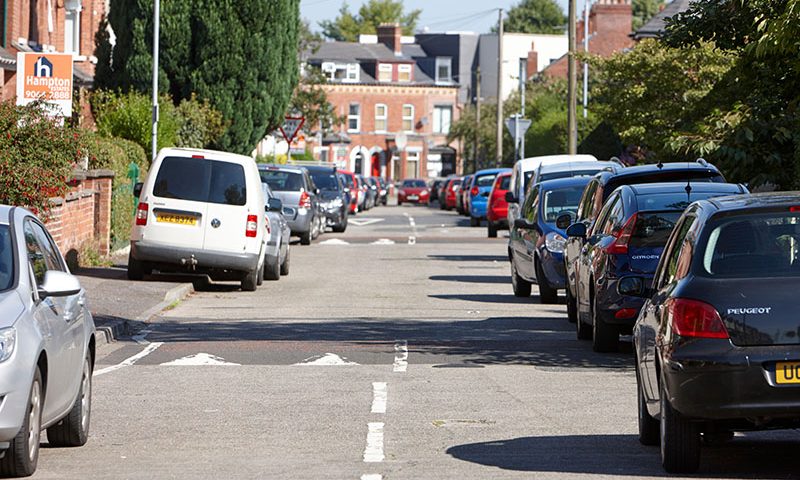DVLA urges drivers to pay car tax ahead of new costs

GN6HDX onstreet parking with speed bumps in a residential street in south belfast uk
Have you paid your car tax? The Driver and Vehicle Licensing Authority (DVLA) is urging that you do so as soon as possible before new changes are brought in later this month.
Rising costs on the horizon
The price you currently pay to tax your car can be determined by its engine size, the year it was built, your circumstances, and other factors. On 23rd March, however, Chancellor Rishi Sunak will unveil the spring budget, which will include changes to car tax in line with rising inflation.
Car tax is split into two parts: a standard rate and your VED rate. The standard rate is a one-off fee of £155, which will rise to £165 from 1st April 2022.
Drivers will also have to pay an increased eco-friendly Vehicle Excise Duty. This new car tax will vary in price, and it all comes down to the amount of CO2 emissions your vehicle is producing. This means you’re likely to pay more than you would right now.
Car experts Heycar have said some of the new car tax rates “will be major and affect the cars that are built that year, others will be a more minor adjustment designed to bring an older tax system in line with inflation.”
A greener change
The new car tax system is part of the government’s efforts to reduce CO2 emissions in the UK. All diesel, petrol and other fuel-powered vehicles will fall under the new VED rules, meaning drivers of these cars will be looking at extra costs.
Low polluting cars that produce 51-75g/km of CO2 will have to pay a first-year rate of £25. The cost unsurprisingly increases with the more CO2 your car produces.
Vehicles of 76-90g/km will pay a first-year rate of £125, but if your car produces 171-190g/km you could be paying £945. This increases to over £1,400 if you have a 191-225g/km vehicle.
The new 2022/23 VED tax bands are as follows:
- 1g to 50g – £10
- 51g to 75g – £25
- 76g to 90g – £125
- 91g to 100g – £150
- 101g to 110g – £170
- 111g to 130g – £190
- 131 to 150g – £230
- 151g to 170g – £585
- 171g to 190g – £945
- 191g to 225g – £1,420
- 226g to 255g – £2,015
- Over 255g – £2,365
From April, cars that cost more than £40,000 will also be required to pay a higher one-off standard fee of £490.


